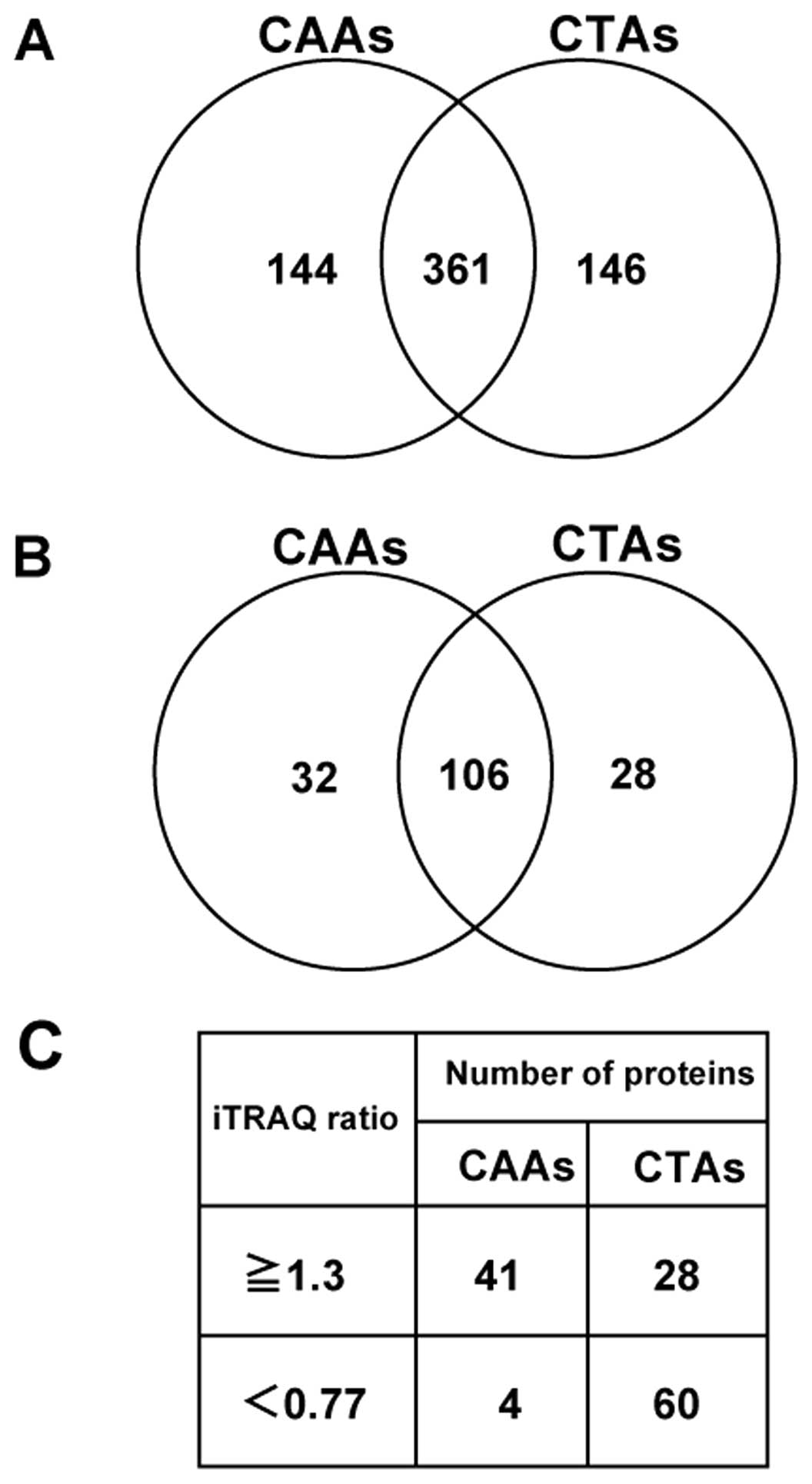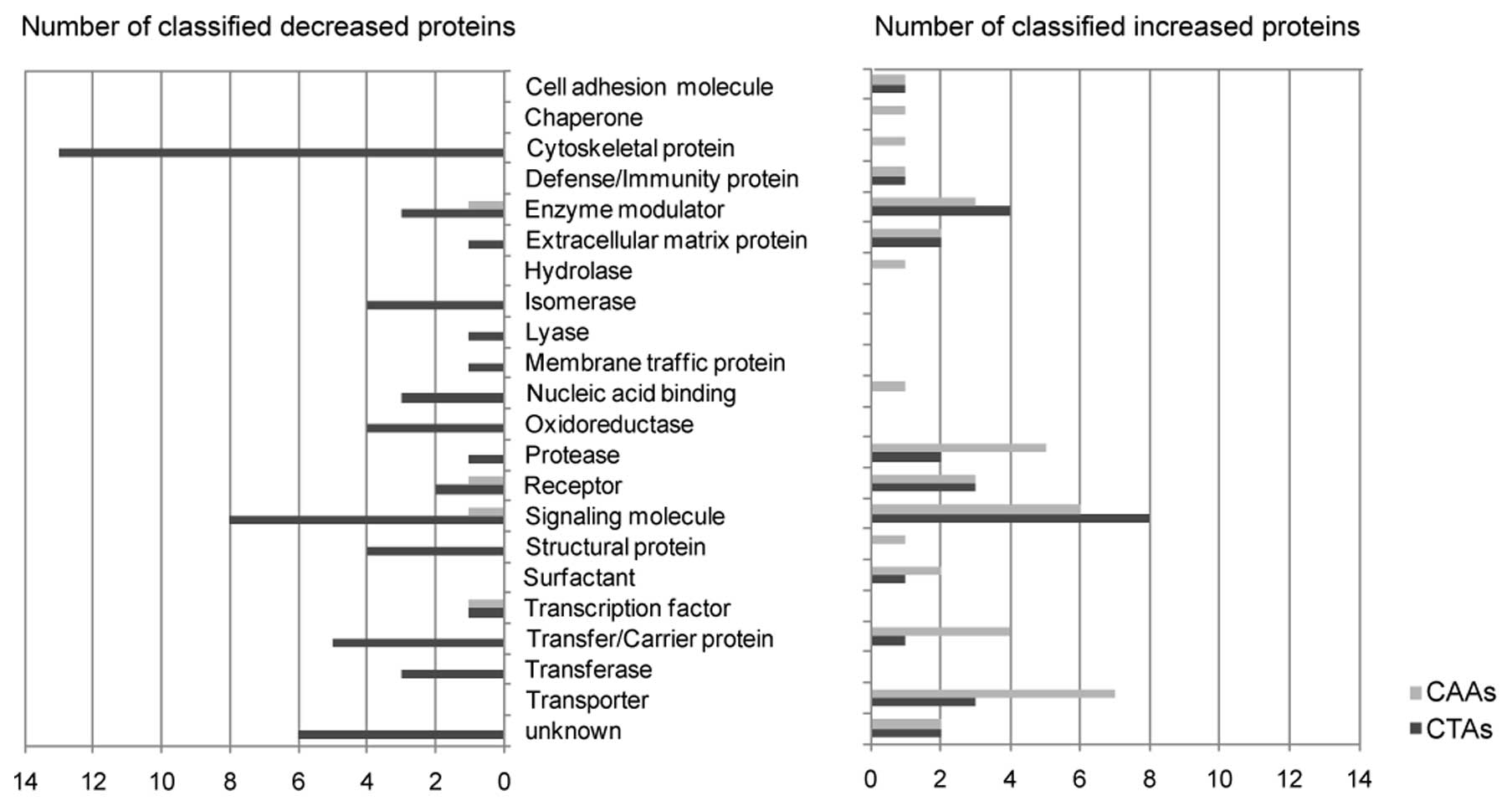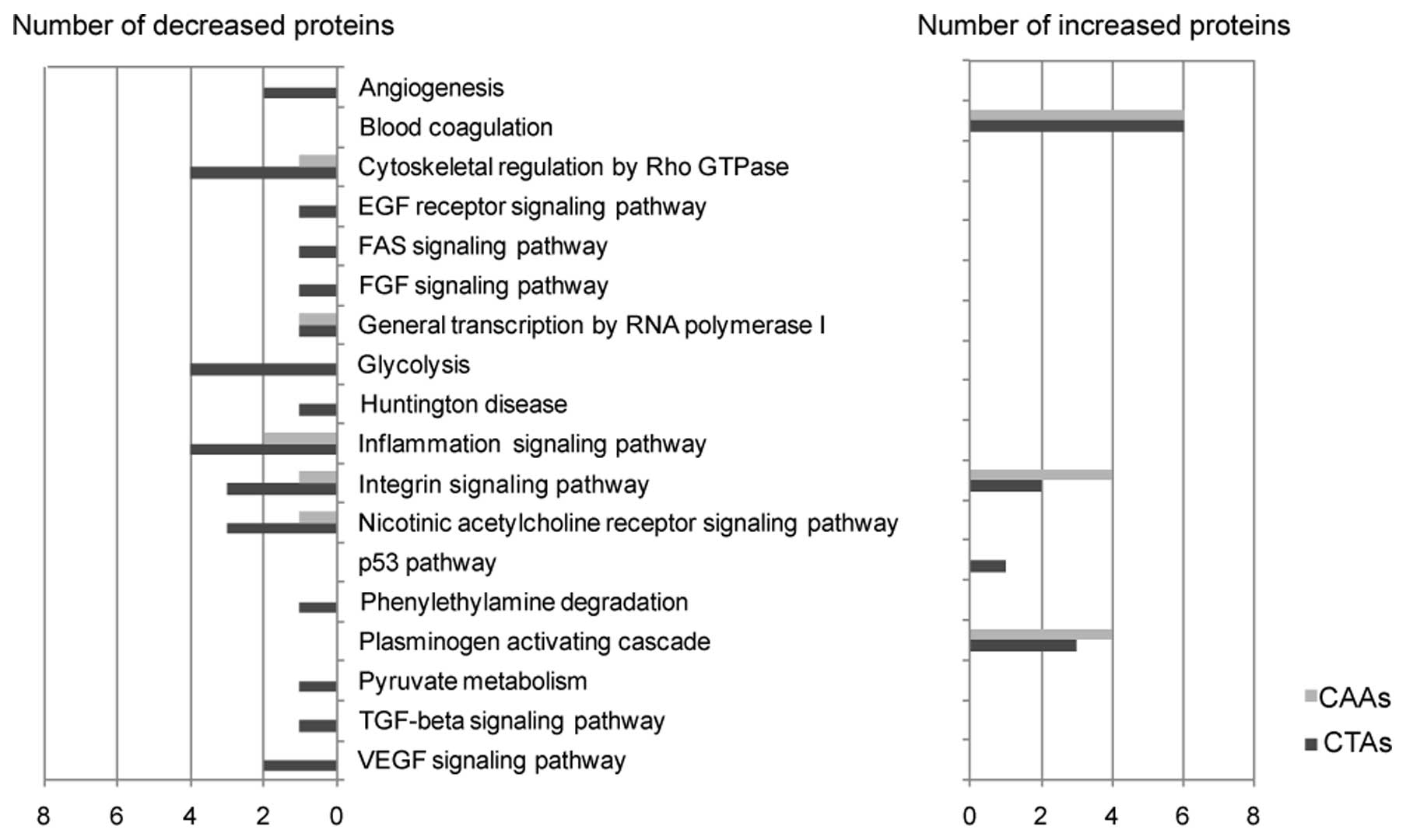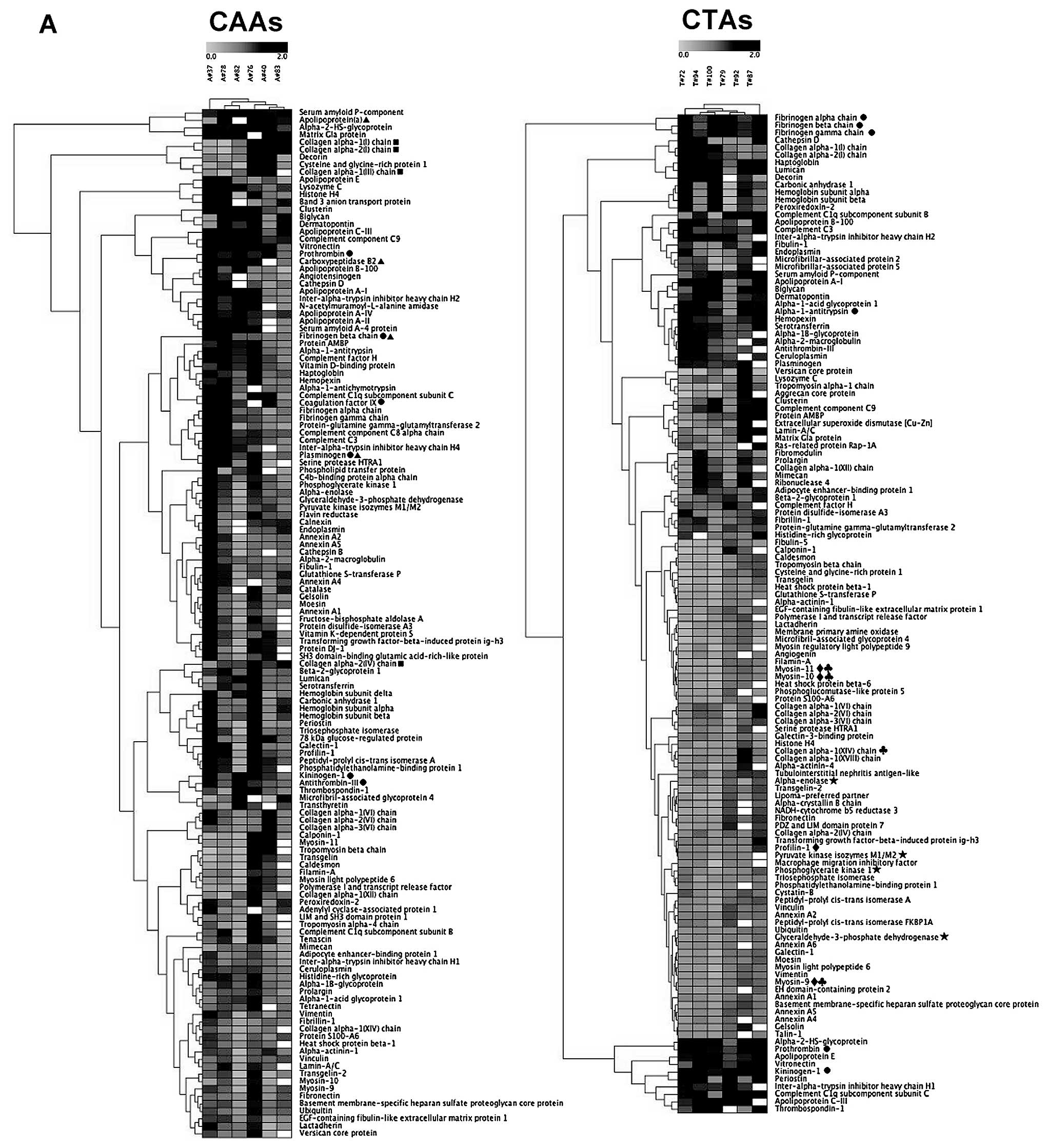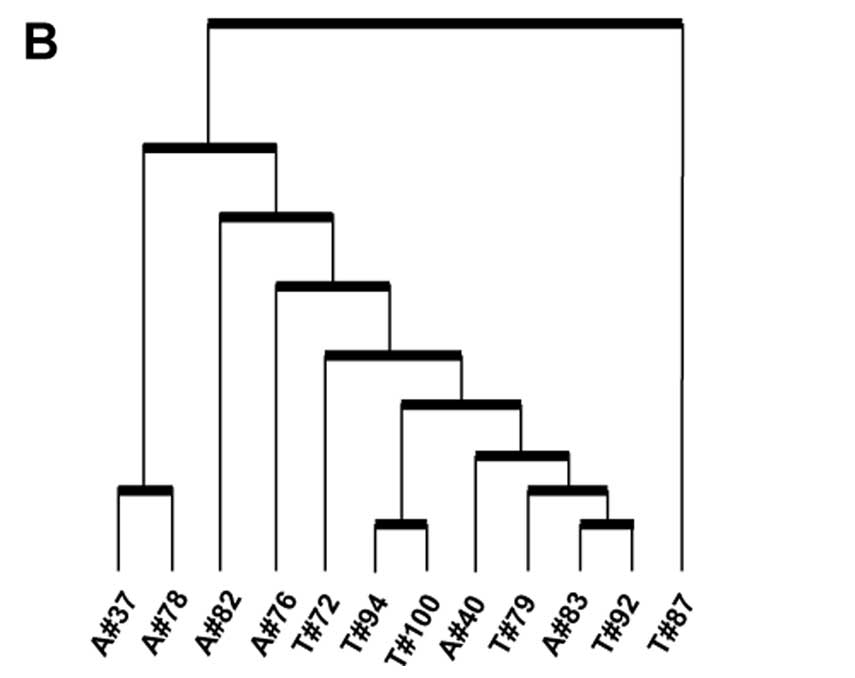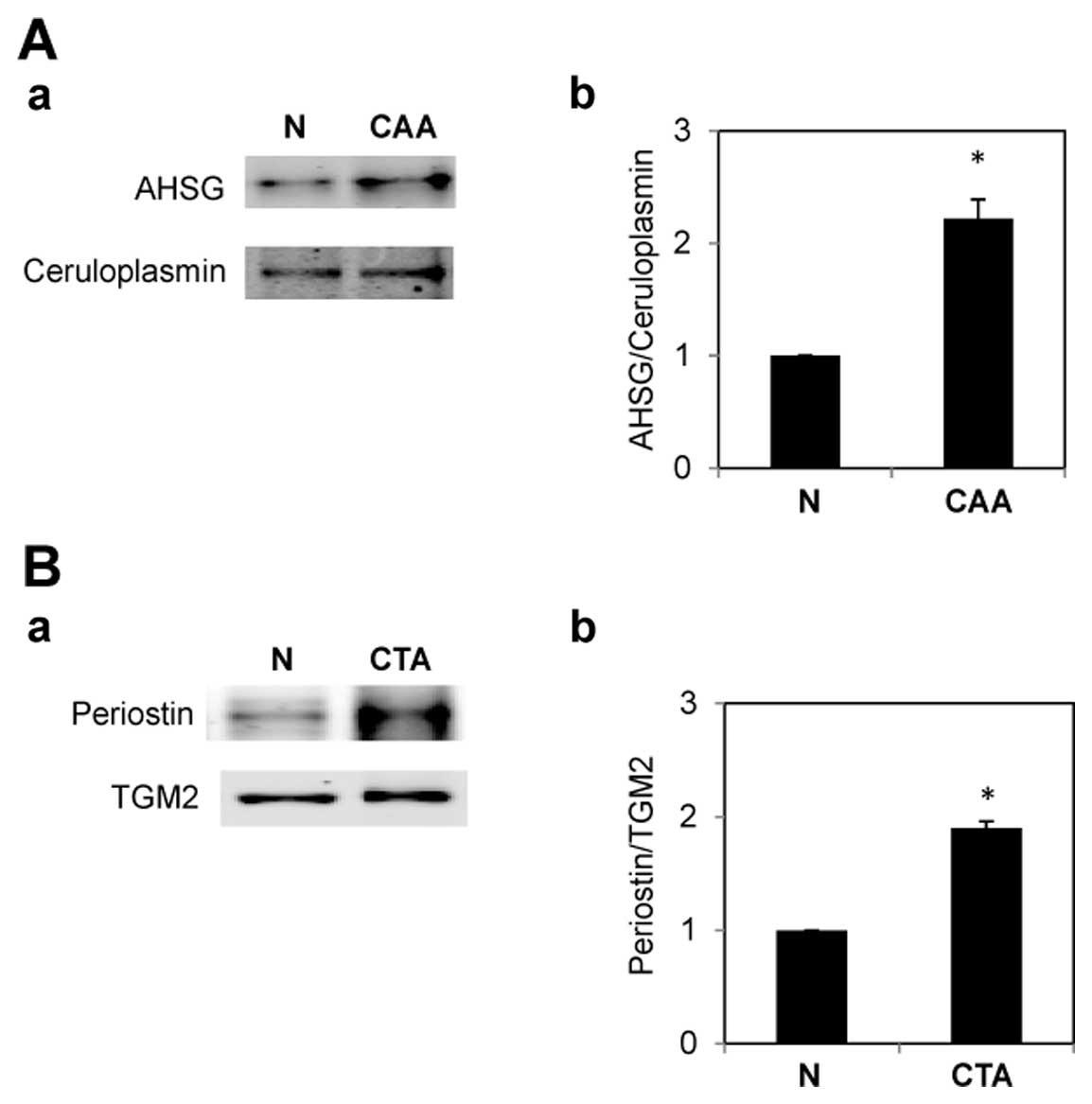|
1.
|
S AnnambhotlaS BourgeoisX WangPH LinQ YaoC
ChenRecent advances in molecular mechanisms of abdominal aortic
aneurysm formationWorld J
Surg32976986200810.1007/s00268-007-9456-x18259804
|
|
2.
|
ZS GalisJJ KhatriMatrix metalloproteinases
in vascular remodeling and atherogenesis: the good, the bad, and
the uglyCirc Res90251262200211861412
|
|
3.
|
H KuivaniemiCD PlatsoucasMD Tilson
IIIAortic aneurysms: an immune disease with a strong genetic
componentCirculation117242252200810.1161/CIRCULATIONAHA.107.69098218195185
|
|
4.
|
H Abdul-HussienRG SoekhoeE WeberCollagen
degradation in the abdominal aneurysm: a conspiracy of matrix
metalloproteinase and cysteine collagenasesAm J
Pathol170809817200710.2353/ajpath.2007.06052217322367
|
|
5.
|
EL HendersonYJ GengGK SukhovaAD
WhittemoreJ KnoxP LibbyDeath of smooth muscle cells and expression
of mediators of apoptosis by T lymphocytes in human abdominal
aortic
aneurysmsCirculation9996104199910.1161/01.CIR.99.1.969884385
|
|
6.
|
J GolledgeJ MullerA DaughertyP
NormanAbdominal aortic aneurysm: pathogenesis and implications for
managementArterioscler Thromb Vasc
Biol2626052613200610.1161/01.ATV.0000245819.32762.cb16973970
|
|
7.
|
D ReedC ReedG StemmermannT HayashiAre
aortic aneurysms caused by
atherosclerosis?Circulation85205211199210.1161/01.CIR.85.1.2051728451
|
|
8.
|
JM RuddyJA JonesFG SpinaleJS
IkonomidisRegional heterogeneity within the aorta: relevance to
aneurysm diseaseJ Thorac Cardiovasc
Surg13611231130200810.1016/j.jtcvs.2008.06.02719026791
|
|
9.
|
V LesauskaiteP TanganelliC SassiSmooth
muscle cells of the media in the dilatative pathology of ascending
thoracic aorta: morphology, immunoreactivity for osteopontin,
matrix metalloproteinases, and their inhibitorsHum
Pathol3210031011200110.1053/hupa.2001.27107
|
|
10.
|
MA CoadyJA RizzoLJ GoldsteinJA
ElefteriadesNatural history, pathogenesis, and etiology of thoracic
aortic aneurysms and dissectionsCardiol
Clin17615635199910.1016/S0733-8651(05)70105-310589336
|
|
11.
|
JA RumbergerDB SimonsLA FitzpatrickPF
SheedyRS SchwartzCoronary artery calcium area by electron-beam
computed tomography and coronary atherosclerotic plaque area. A
histopathologic correlative
studyCirculation9221572162199510.1161/01.CIR.92.8.2157
|
|
12.
|
CM ShanahanMechanisms of vascular
calcification in renal diseaseClin
Nephrol63146157200510.5414/CNP6314615730057
|
|
13.
|
S LehtoL NiskanenM SuhonenT RönnemaaM
LaaksoMedial artery calcification. A neglected harbinger of
cardiovascular complications in non-insulin-dependent diabetes
mellitusArterioscler Thromb Vasc
Biol16978983199610.1161/01.ATV.16.8.978
|
|
14.
|
G RusanescuR WeisslederE AikawaNotch
signaling in cardiovascular disease and calcificationCurr Cardiol
Rev4148156200810.2174/15734030878516055219936191
|
|
15.
|
J KendrickM ChoncholThe role of phosphorus
in the development and progression of vascular calcificationAm J
Kidney Dis58826834201110.1053/j.ajkd.2011.07.02021956015
|
|
16.
|
A DidangelosX YinK MandalExtracellular
matrix composition and remodeling in human abdominal aortic
aneurysms: a proteomics approachMol Cell
Proteomics10M111.008128201110.1074/mcp.M111.00812821593211
|
|
17.
|
WS TungJK LeeRW ThompsonSimultaneous
analysis of 1176 gene products in normal human aorta and abdominal
aortic aneurysms using a membrane-based complementary DNA
expression arrayJ Vasc Surg34143150200110.1067/mva.2001.113310
|
|
18.
|
TS AbsiTM Sundt IIIWS TungAltered patterns
of gene expression distinguishing ascending aortic aneurysms from
abdominal aortic aneurysms: complementary DNA expression profiling
in the molecular characterization of aortic diseaseJ Thorac
Cardiovasc Surg126344357200310.1016/S0022-5223(02)73576-9
|
|
19.
|
PL RossYN HuangJN MarcheseMultiplexed
protein quantitation in Saccharomyces cerevisiae using
amine-reactive isobaric tagging reagentsMol Cell
Proteomics3115411692004
|
|
20.
|
K MatsumotoPhosphorylation of
extracellular matrix tenascin-X detected by differential mass
tagging followed by nanoLC-MALDI-TOF/TOF-MS/MS using ProteinPilot
softwareConnect Tissue
Res53106116201210.3109/03008207.2011.611600
|
|
21.
|
IV ShilovSL SeymourAA PatelThe Paragon
Algorithm, a next generation search engine that uses sequence
temperature values and feature probabilities to identify peptides
from tandem mass spectraMol Cell
Proteomics616381655200710.1074/mcp.T600050-MCP200
|
|
22.
|
A SturnJ QuackenbushZ TrajanoskiGenesis:
cluster analysis of microarray
dataBioinformatics18207208200210.1093/bioinformatics/18.1.20711836235
|
|
23.
|
X WangSA LeMaireL ChenIncreased collagen
deposition and elevated expression of connective tissue growth
factor in human thoracic aortic dissectionCirculation114Suppl
1I200I205200610.1161/CIRCULATIONAHA.105.000240
|
|
24.
|
Z TouatL LepageV
OllivierDilation-dependent activation of platelets and prothrombin
in human thoracic ascending aortic aneurysmArterioscler Thromb Vasc
Biol28940946200810.1161/ATVBAHA.107.158576
|
|
25.
|
X WangSA LeMaireL ChenDecreased expression
of fibulin-5 correlates with reduced elastin in thoracic aortic
dissectionSurgery138352359200510.1016/j.surg.2005.06.00616153447
|
|
26.
|
R WallinN WajihGT GreenwoodDC SaneArterial
calcification: a review of mechanisms, animal models, and the
prospects for therapyMed Res
Rev21274301200110.1002/med.101011410932
|
|
27.
|
LT JensenNB HøstCollagen: scaffold for
repair or executionCardiovasc
Res33535539199710.1016/S0008-6363(96)00247-79093523
|
|
28.
|
T NakamuraPR LozanoY IkedaFibulin-5/DANCE
is essential for elastogenesis in
vivoNature415171175200210.1038/415171a11805835
|
|
29.
|
R RezgFC BarretoDV BarretoS LiabeufTB
DrüekeZA MassyInhibitors of vascular calcification as potential
therapeutic targetsJ
Nephrol24416427201110.5301/JN.2011.842021688249
|
|
30.
|
HM SpronkBA SouteLJ SchurgersMatrix Gla
protein accumulates at the border of regions of calcification and
normal tissue in the media of the arterial vessel wallBiochem
Biophys Res Commun289485490200110.1006/bbrc.2001.599611716499
|
|
31.
|
RM KraussYA KesäniemiCardiovascular
disease and hyperlipidaemiaCurr Opin
Lipidol5249251199410.1097/00041433-199408000-000017981954
|
|
32.
|
J GolledgeF van BockxmeerK JamrozikM
McCannPE NormanAssociation between serum lipoproteins and abdominal
aortic aneurysmAm J
Cardiol105249251201010.1016/j.amjcard.2009.12.076
|
|
33.
|
K GreenowNJ PearceDP RamjiThe key role of
apolipoprotein E in atherosclerosisJ Mol
Med83329342200510.1007/s00109-004-0631-315827760
|
|
34.
|
G WalldiusI JungnerThe apoB/apoA-I ratio:
a strong, new risk factor for cardiovascular disease and a target
for lipid-lowering therapy-a review of the evidenceJ Intern
Med259493519200610.1111/j.1365-2796.2006.01643.x16629855
|
|
35.
|
A TailleuxP DuriezJC FruchartV
ClaveyApolipoprotein A-II, HDL metabolism and
atherosclerosisAtherosclerosis164113200210.1016/S0021-9150(01)00751-112119188
|
|
36.
|
S StanE DelvinM LambertE SeidmanE LevyApo
A-IV: an update on regulation and physiologic functionsBiochim
Biophys Acta1631177187200310.1016/S1388-1981(03)00004-012633684
|
|
37.
|
A KawakamiM YoshidaApolipoprotein CIII
links dyslipidemia with atherosclerosisJ Atheroscler
Thromb16611200910.5551/jat.E60719262004
|
|
38.
|
M SadekRL HynecekS GoldenbergKC KentML
MarinPL FariesGene expression analysis of a porcine native
abdominal aortic aneurysm
modelSurgery144252258200810.1016/j.surg.2008.04.00718656633
|
|
39.
|
JB MichelJL Martin-VenturaJ EgidoNovel
aspects of the pathogenesis of aneurysms of the abdominal aorta in
humansCardiovasc Res901827201110.1093/cvr/cvq33721037321
|
|
40.
|
JJ StecH SilbershatzGH ToflerAssociation
of fibrinogen with cardiovascular risk factors and cardiovascular
disease in the Framingham Offspring
PopulationCirculation10216341638200010.1161/01.CIR.102.14.163411015340
|
|
41.
|
ML McCormickD GavrilaNL WeintraubRole of
oxidative stress in the pathogenesis of abdominal aortic
aneurysmsArterioscler Thromb Vasc
Biol27461469200710.1161/01.ATV.0000257552.94483.1417218601
|
|
42.
|
K GroteI FlachM LuchtefeldMechanical
stretch enhances mRNA expression and proenzyme release of matrix
metalloproteinase-2 (MMP-2) via NAD(P)H oxidase-derived reactive
oxygen speciesCirc
Res92e80e86200310.1161/01.RES.0000077044.60138.7C
|
|
43.
|
MA DubickGC HunterS CaseyCL KeenAortic
ascorbic acid, trace elements, and superoxide dismutase activity in
human aneurysmal and occlusive diseaseProc Soc Exp Biol
Med184138143198710.3181/00379727-184-424573809168
|
|
44.
|
JW StephensBC BainSE
HumphriesGene-environment interaction and oxidative stress in
cardiovascular
diseaseAtherosclerosis200229238200810.1016/j.atherosclerosis.2008.04.00318490019
|
|
45.
|
S SukhanovY HigashiSY ShaiNovel effect of
oxidized low-density lipoprotein: cellular ATP depletion via
downregulation of glyceraldehyde-3-phosphate dehydrogenaseCirc
Res99191200200610.1161/01.RES.0000232319.02303.8c
|















